Mission
The mission of the Cullen College of Engineering at the University of Houston is to serve the Greater Houston community, Texas and the nation by educating engineers to assume leadership positions in the identification and solution of the complex technical challenges of society, to advance the state of knowledge through pioneering research and scholarly work, to facilitate the transfer of new technology to Texas and U.S. industries, to play a key role in economic development for the Greater Houston region and the State of Texas, and to benefit the public sector through service to the university, community, industry, government and the engineering profession.
History of the Cullen College of Engineering
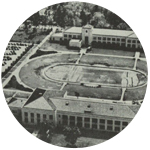 Aerial View of Campus 1939 |
While the University of Houston itself dates back to 1927 as a junior college established by the Board of Education of the Houston Independent School District, the engineering school began to organize itself in the 1930s. HISD began transitioning the junior college to a four-year school in 1934.
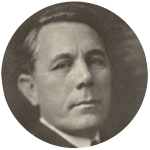 Mr. H. R. Cullen |
The 110 acres that now comprise the main UH campus were acquired in 1936, and in 1937 and 1938, Houston oilman and philanthropist Hugh Roy Cullen began his first of many fundraising drives. The College of Engineering is established in 1941, and in the 1942 catalog, it is advertised alongside the other offered colleges — Arts and Sciences, Business Administration, Education, Community Service, Graduate School and Junior College.
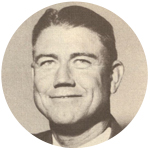 John Edward Hoff |
At the January 13, 1941 meeting of the Board of Trustees, John Edward Hoff was appointed as an instructor of engineering effective February 3 of that year. His salary was $2,200 for nine months. Hoff was a volunteer tennis coach for more than 20 years, the first chairman of the Civil Engineering Department, and he remained a faculty member until his death in 1966. He is believed to be the first full-time faculty member appointed to “engineering,” which at the time was a department in the Division of Natural Sciences, and the first to gain tenure. A tennis complex was named in his honor in 1968.
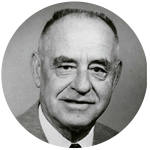 Andy Rasmussen |
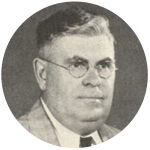 L.B. Fields |
At the February 10, 1941 meeting, four part-time engineering instructors were approved at the rate of $36 for one course, or $30 per course for two or more courses. The employees were Andy Rasmussen, H.H. List, Robert Haldane and L.B. Fields. Rasmussen would stay at UH until 1969, except for his war service from 1943 to 1946, and serve as the first chairman of the Mechanical Engineering Department in 1950.
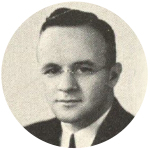 Walter William “Bill” Kemmerer |
At the February 26, 1943 meeting of the UH Board though, the need for an accredited engineering school was recognized. While individual programs were recognized as providing technical proficiency, without an overall, comprehensive engineering program, UH had been unable to provide some war training courses in engineering subjects. The GI Bill was also being discussed at this time, and UH comptroller Walter William “Bill” Kemmerer recognized the need to have the accreditation in place for the expected surge of students.
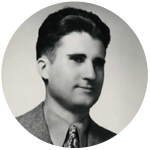 M.L. Ray |
At this time in 1946, M.L. Ray was listed as the “acting director” or dean, and a lecturer for engineering. He served in this role until March 1955, but was never named as the permanent dean.
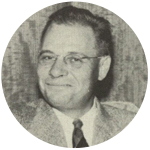 R.W. Lilliott |
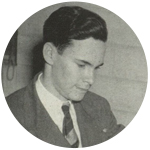 Thomas Whitaker |
By the June 16, 1946 meeting, there were five engineering faculty members — John Edward Hoff, J.R. Brundage, R.W. Lilliott, E.W. McMillin and Thomas Whitaker. However, Lilliott was a drafting professor, as that was under the umbrella of engineering at the time instead of architecture like it is today. The highest salary was $4,000 per month, close to the $4,300 high at the school, earned by football coach Jewell Wallace.
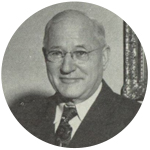 Edison E. Oberholtzer |
UH president Edison E. Oberholtzer is sent to meet with the Navy and War departments. He reported that UH had received A-1 ratings for its training since 1939, and the armed forces recommended that more enlisted men be sent to the university. The accreditation process began for the departments and was accomplished by 1952, shortly after the College was divided more sharply by discipline.
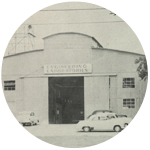 Y-Building |
On April 18, 1947, the Y-Building (shown above) was proposed as a “temporary” structure, 300 feet by 140 feet, at a cost of $105,000 for the building, $45,000 for the electrical and mechanical work, and $150,000 for the equipment. Approval was given at the May 1 meeting. It outlasts nearly everything else on campus, until its demolition in 2012.
 Charles V. Kirkpatrick |
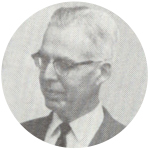 J.T. Elrod |
As of the 1947–48 academic year, the faculty head count is 11. At the September 17, 1947 meeting, Charles V. Kirkpatrick is hired as an instructor, focusing on petroleum. He would later become a member of the Petroleum Engineering Program, and he was the second dean of the College of Engineering from 1964 to 1976. Also at this meeting, J.T. Elrod is hired as an assistant professor in engineering and business. He would later leave to get his doctorate at Ohio State, but then return to UH as an original member of the industrial engineering department, and later, chairman.
One of the engineering college’s most famous early members was D.G. “Dave” Williams. While he was hired in September 1947 for the engineering faculty, thanks to degrees in Chemistry and Chemical Engineering, he left that role to become UH’s golf coach. His teams won 16 national titles, and in his 37 years, 25 of his teams finished in the top three. Now known as the “Father of College Golf,” the Golf Coaches Association of America named their Coach of the Year award after him.
For the 1948–49 academic year, faculty size increased to 19. The next year, it would be 30 full-time employees, as the College and UH continued to ramp up drastically in size and scope. For UH, in a single year, enrollment jumped from 11,380 to 13,720, with roughly half the student body qualifying as veterans. The numbers would stabilize into a more normal growth curve over the next few years, and by 1954, engineering faculty numbered at 39.
 |
The College of Engineering was formally divided into departments after a vote by the board at the June 20, 1950 meeting. A Petroleum Engineering Department building was proposed at this time at a cost of $3 million, but it ultimately wasn’t built, and there wouldn’t be a building for the department until 2010.
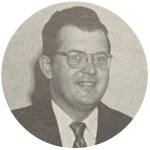 William Prengle |
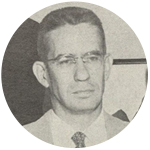 Joe Crump |
In September 1952, Abraham Dukler and William Prengle — formerly research engineers with Shell — were promoted from part-time to full-time instructors. Joe Crump, from Harvard, was also onboarded to establish the Chemical Engineering Department and to become its first chairman; Along with Crump, the three would remain at UH until retirement, and form one of the strongest departments on campus. Crump would be promoted to Associate Dean of Engineering in September 1958, as well as made the first Director of Research.
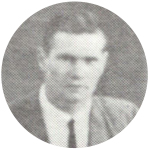 Leo John Castellanos |
Significant hires in this time frame included Leo John Castellanos, a 24-year member of Mechanical Engineering; Albert Bonnar, a Civil Engineering professor for 25 years; and Bill Kittinger, recognized as an excellent teacher of Electrical Engineering, and winner of the CCE’s first teaching award in the mid-1960s. The award was renamed in his honor shortly after his death.
Frank M. Tiller was appointed the first “permanent” dean of the college on March 14, 1955. Known as the “Father of Modern Filtration Theory,” he was fluent in English, Spanish and Portuguese, and served as dean until 1963. He pushed for more faculty members to earn their doctorates. When he started, only 14 percent of faculty had Ph.D.s, and by the end of his tenure as dean, it was 40 percent. In 1963, Tiller became director of the newly-formed UH Office of International Affairs, before returning to teaching and research in 1972. At the time of his death in 2005, he was the M.D. Anderson Distinguished Professor of Chemical Engineering emeritus.
In December 1956, Hugh Roy Cullen announced that his foundation would finance the design and construction of the engineering building — the third significant donation from Cullen for an engineering building. As a result, there was a suggestion to name the entire university after him, but he vetoed this, and instead it was agreed that the College of Engineering would bear his name, although at his request this honor was kept private. However, the $1.5 million that Cullen pledged at this time needed to be used to prevent the university from going insolvent in November 1959, and the engineering building was postponed as a result. The College’s name was finally changed in 1967, about a year before the new engineering building opened on May 3, 1968.
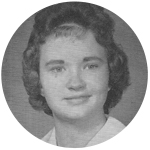 Betty J. Barr |
Betty J. Barr received her B.S., M.S. and Ph.D. in mathematics from UH in 1967, 1969 and 1971, and she joined the Industrial Engineering Department as an instructor in linear algebra. She is believed to be one of the first women faculty members. She had a 40-year career at UH, retiring in 2011.
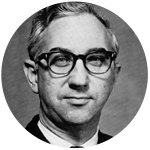 Abraham Dukler |
Abraham Dukler became dean of the College of Engineering in 1976. He returned to research — described as his first love by colleagues — in 1982. A member of the NAE and a fellow of the American Institute of Chemical Engineers, he had a 37-year career at UH. His tenure was noted for procuring large grants at the time to beef up the College’s research capabilities.
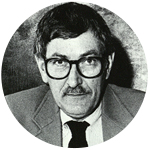 Roger Eichhorn |
Roger Eichhorn becomes the dean of the College of Engineering and a professor of Mechanical Engineering in May 1982, leaving a similar position at the University of Kentucky for UH. Under Eichhorn’s leadership, the college raised student admissions standards, elevated the quality of the faculty and greatly expanded the college’s public identity and community presence. In 1994, research awards hit a then-peak of $10 million, and enrollment peaked at 3,835 in 1983. He returned to teaching in 1996, and retired in 2002.
Eichhorn was succeeded by Raymond Flumerfelt, who served as the College’s fifth dean from 1996 through 2007. He continued the work of Dukler and Eichhorn, emphasizing the pursuit of research, and dealt with challenging budget situations in the 1990s and early 2000s.
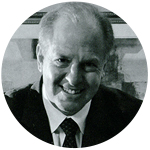 Joseph Tedesco |
Joseph Tedesco was hired as the College’s sixth dean, effective Jan. 1, 2008. Known for his ability to attract funding and support for research while chairman of the Civil and Coastal Engineering Department at the University of Florida, Tedesco has led the College to new milestones for research funding and enrollment.